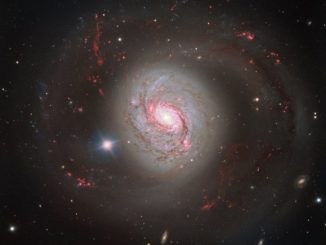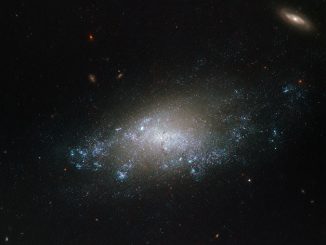
galaxy




Catch sight of a celestial owl flying overhead in the spring sky
Owls may be scarce near your favourite viewing spot, but the Northern Hemisphere spring sky contains one celestial owl that you can track down in small telescopes – Messier 97 (NGC 3587). Commonly called the Owl Nebula, M97 is a planetary nebula discovered by Pierre Méchain in 1781 that is currently ideally placed for observation almost overhead at nightfall in the constellation of Ursa Major, the Great Bear.

A face-on spiral in all its glory – and colours
A composite image from the Hubble Space Telescope shows a dramatic range of color in galaxy NGC 3344, a weakly barred spiral half the size of the Milky Way some 20 million light years away in the constellation Leo Minor. Hot young stars, seen in blue, populate the spiral arms along with glowing red clouds of gas and dust that provide the raw materials for new suns.


Dawn of a galactic collision
A riot of colour and light dances through this peculiarly shaped galaxy, NGC 5256. Its smoke-like plumes are flung out in all directions and the bright core illuminates the chaotic regions of gas and dust swirling through the galaxy’s centre. Its odd structure is due to the fact that this is not one galaxy, but two — in the process of a galactic collision.


Newly discovered fast-growing galaxies could solve cosmic riddle
Astronomers have discovered a new kind of galaxy in the early universe, less than a billion years after the Big Bang. These galaxies are forming stars more than a hundred times faster than our own Milky Way. The discovery could explain an earlier finding: a population of surprisingly massive galaxies at a time 1.5 billion years after the Big Bang, which would require such hyper-productive precursors to grow their hundreds of billions of stars.

Hubble’s multispectral view of spiral galaxy NGC 3274
This image of the spiral galaxy NGC 3274 comes courtesy of the NASA/ESA Hubble Space Telescope’s Wide Field Camera 3 (WFC3). Hubble’s WFC3 vision spreads from the ultraviolet light through to the near infrared, allowing astronomers to study a wide range of targets, from nearby star formation through to galaxies in the most remote regions of the cosmos.
